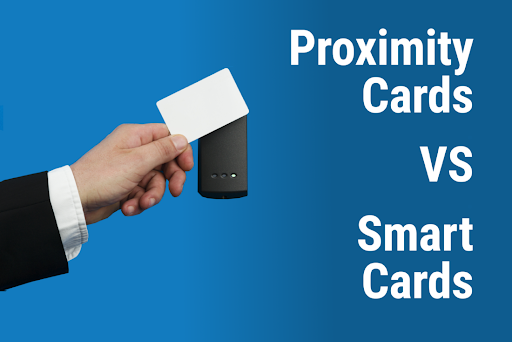When navigating access control systems, many professionals encounter a key question: proximity card or smart card? The term “proximity card” is often used interchangeably with “smart card,” but the two serve distinct roles. Understanding their differences is crucial for making secure, scalable, and cost-effective decisions.
Technology Under the Hood
The primary difference between a proximity card and a smart card lies in their architecture. A proximity card contains a coil and chip that only transmit data when powered by the reader’s field. This communication is one-way. It can’t perform logic operations or store dynamic information, which limits its function.
In contrast, a smart card includes a microcontroller or memory chip. It supports dynamic data exchange and encryption. Many also include secure storage for cryptographic keys, enabling advanced applications like digital identity verification, data access, and even payment processing. A smart card is akin to a mini-computer, whereas a proximity card is more akin to a digital key.
Use Case Scenarios and Applications
Proximity cards are widely used in basic access control systems. Offices, apartment buildings, and parking facilities appreciate their ease of use and low cost. If you only need to open a door or gate without logging in or requiring extra features, a proximity card is more than sufficient.
However, smart cards shine in more complex environments. Government agencies, corporate headquarters, and healthcare institutions often require not just access control but also secure login to digital systems. Smart cards serve these needs well. Their multi-functionality makes them ideal where data integrity and identity verification are critical.
Security Implications and Vulnerabilities
Security is a significant point of comparison. Proximity cards typically lack encryption, which makes them susceptible to cloning and replay attacks. This poses a substantial risk in sensitive areas, where unauthorised access could lead to severe consequences.
Smart cards counter this vulnerability through secure communication channels and advanced encryption methods. Some even use Public Key Infrastructure (PKI) to authenticate identities robustly. While no system is entirely immune, the smart card’s architecture inherently reduces exposure to common threats that plague proximity cards.
Cost and Implementation Considerations
Cost is always a key concern. Proximity cards are less expensive to produce and easier to implement. They require minimal infrastructure and are compatible with many existing systems, making them ideal for small to mid-sized deployments.
Smart cards, in contrast, demand more from both the user and the infrastructure. Card readers must support the exchange of encrypted data. Back-end systems need to handle more complex data flows. This upfront investment often pays off in long-term security and adaptability, but may be excessive for low-risk applications.
Interoperability and Compatibility
Compatibility can make or break your access control system. Proximity cards typically adhere to well-established standards, such as 125 kHz RFID, making them widely compatible with legacy systems. This allows for easy upgrades without requiring a total system overhaul.
Smart cards, however, can present challenges in interoperability. They may require specific middleware or drivers, mainly when used across diverse platforms. Nonetheless, newer standards, such as ISO/IEC 14443 and 7816, help bridge these gaps, making smart cards more adaptable than ever before.
User Experience and Scalability
From a user standpoint, proximity cards are elementary. Present the card to a reader, and access is granted. There are no passwords to remember and no software to install. For organisations prioritising ease of use and rapid issuance, this simplicity is a significant advantage.
Smart cards offer a more dynamic user experience. They can combine access control with identity verification, digital signing, and more. For large enterprises requiring integrated solutions, the added complexity is worthwhile. Scalability is also more effortless with smart cards when integrated into IT ecosystems.
Choosing the Right Solution with the Proximity Card in Context
The primary difference between smart cards and proximity cards lies in their purpose and the environment in which they are used. If you need a simple and convenient access experience, a proximity card may be your best choice. However, if you require enhanced security, multi-purpose functionality, and integration with a broader IT system, a smart card is a better choice.
ALSO READ: Turbo Media Site Demis Tech: Understanding Its Roles



